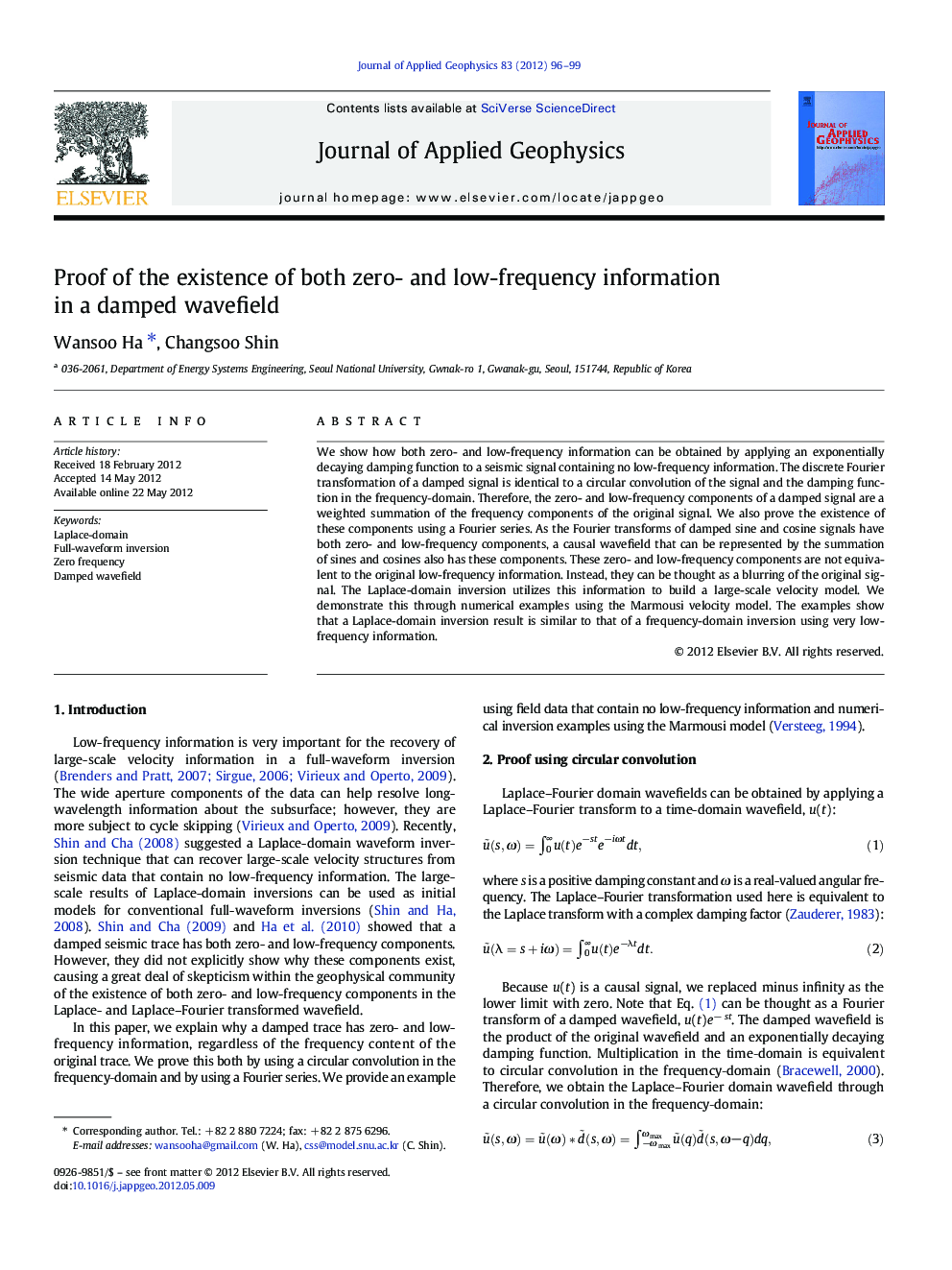| Article ID | Journal | Published Year | Pages | File Type |
|---|---|---|---|---|
| 4740464 | Journal of Applied Geophysics | 2012 | 4 Pages |
We show how both zero- and low-frequency information can be obtained by applying an exponentially decaying damping function to a seismic signal containing no low-frequency information. The discrete Fourier transformation of a damped signal is identical to a circular convolution of the signal and the damping function in the frequency‐domain. Therefore, the zero- and low-frequency components of a damped signal are a weighted summation of the frequency components of the original signal. We also prove the existence of these components using a Fourier series. As the Fourier transforms of damped sine and cosine signals have both zero- and low-frequency components, a causal wavefield that can be represented by the summation of sines and cosines also has these components. These zero- and low-frequency components are not equivalent to the original low-frequency information. Instead, they can be thought as a blurring of the original signal. The Laplace-domain inversion utilizes this information to build a large-scale velocity model. We demonstrate this through numerical examples using the Marmousi velocity model. The examples show that a Laplace-domain inversion result is similar to that of a frequency-domain inversion using very low-frequency information.
► We show why a damped wavefield has the zero- and low-frequency information. ► The zero-frequency components are a weighted sum of original frequency contents. ► The zero-frequency components are different from that in the original signal.
